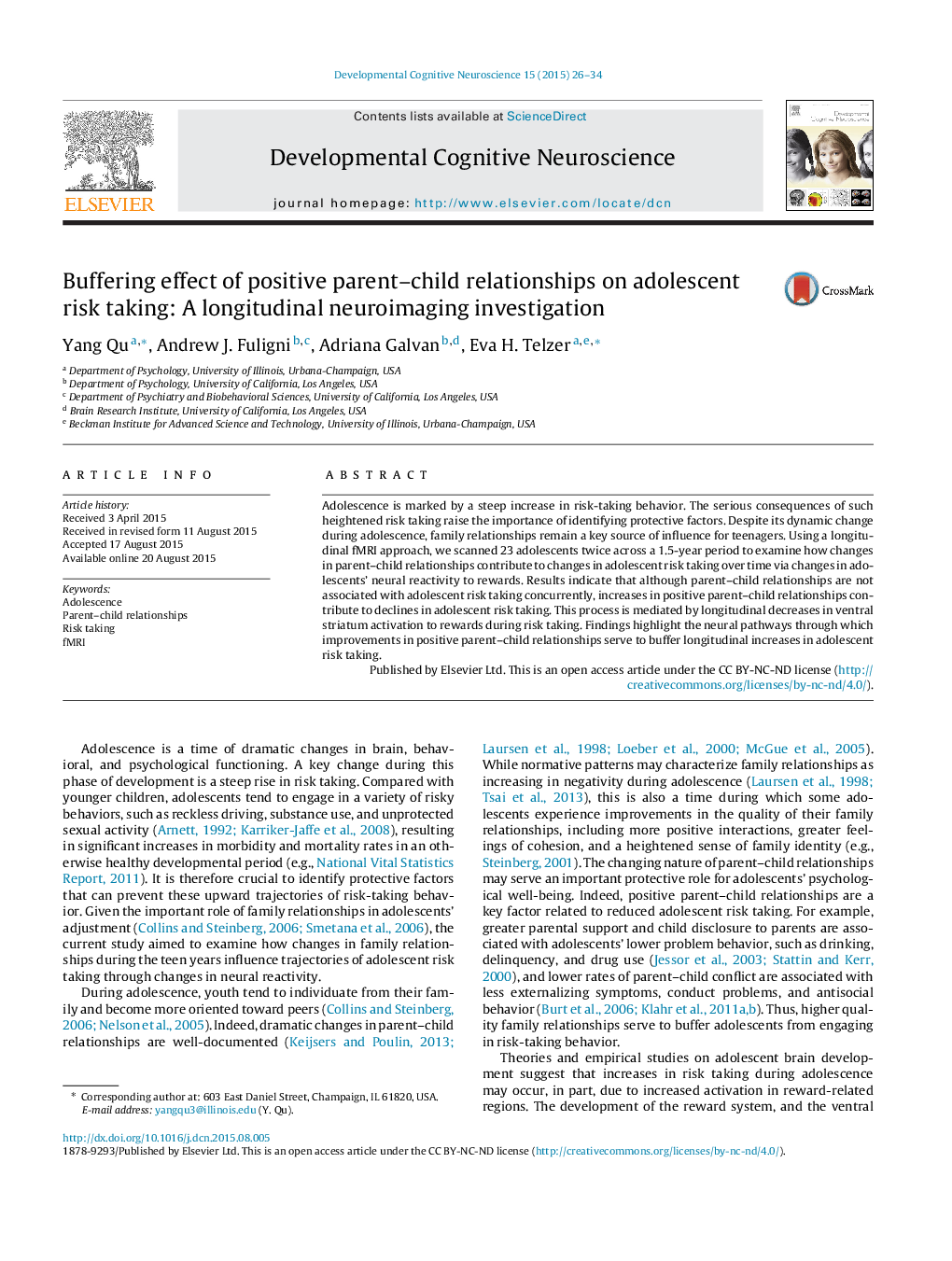| کد مقاله | کد نشریه | سال انتشار | مقاله انگلیسی | نسخه تمام متن |
|---|---|---|---|---|
| 4316540 | 1613108 | 2015 | 9 صفحه PDF | دانلود رایگان |
• Teens’ neural response to reward during risk taking was assessed twice over 1.5 years.
• Teens’ positive parent–child relationships and risk taking were also measured.
• Increases in positive parent–child relationships related to declines in risk taking.
• This is mediated by longitudinal decreases in ventral striatum activation.
• Results highlight the key role of neural reactivity to rewards in this process.
Adolescence is marked by a steep increase in risk-taking behavior. The serious consequences of such heightened risk taking raise the importance of identifying protective factors. Despite its dynamic change during adolescence, family relationships remain a key source of influence for teenagers. Using a longitudinal fMRI approach, we scanned 23 adolescents twice across a 1.5-year period to examine how changes in parent–child relationships contribute to changes in adolescent risk taking over time via changes in adolescents’ neural reactivity to rewards. Results indicate that although parent–child relationships are not associated with adolescent risk taking concurrently, increases in positive parent–child relationships contribute to declines in adolescent risk taking. This process is mediated by longitudinal decreases in ventral striatum activation to rewards during risk taking. Findings highlight the neural pathways through which improvements in positive parent–child relationships serve to buffer longitudinal increases in adolescent risk taking.
Journal: Developmental Cognitive Neuroscience - Volume 15, October 2015, Pages 26–34
